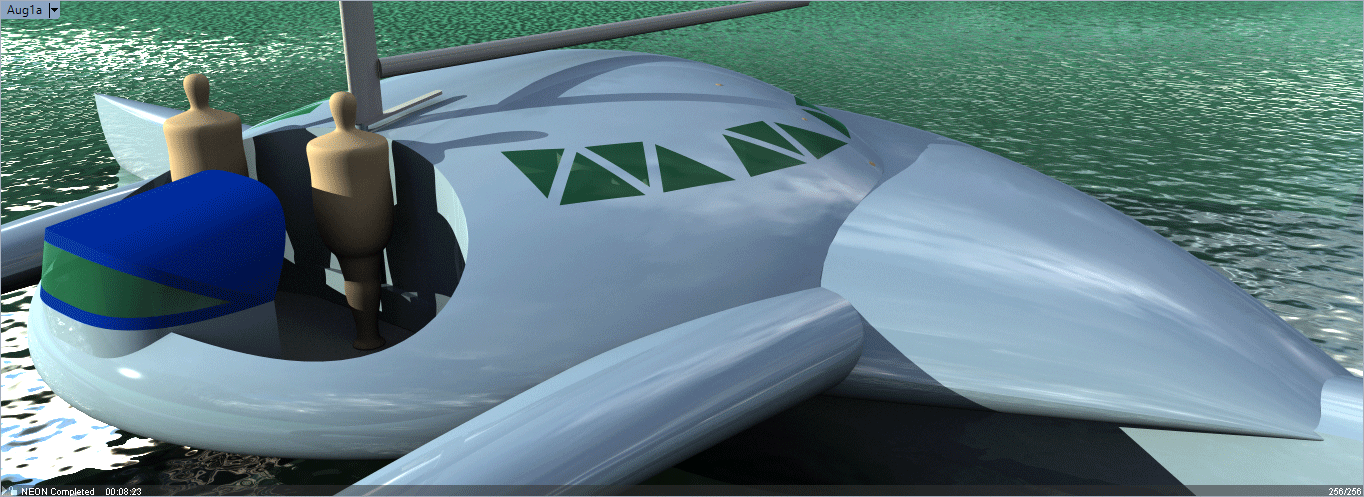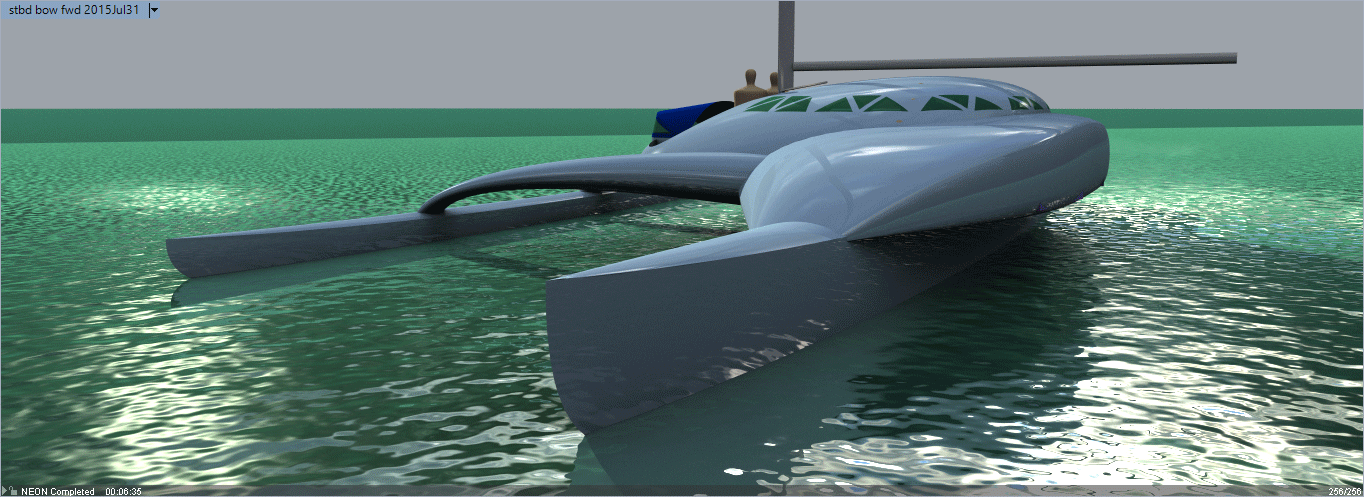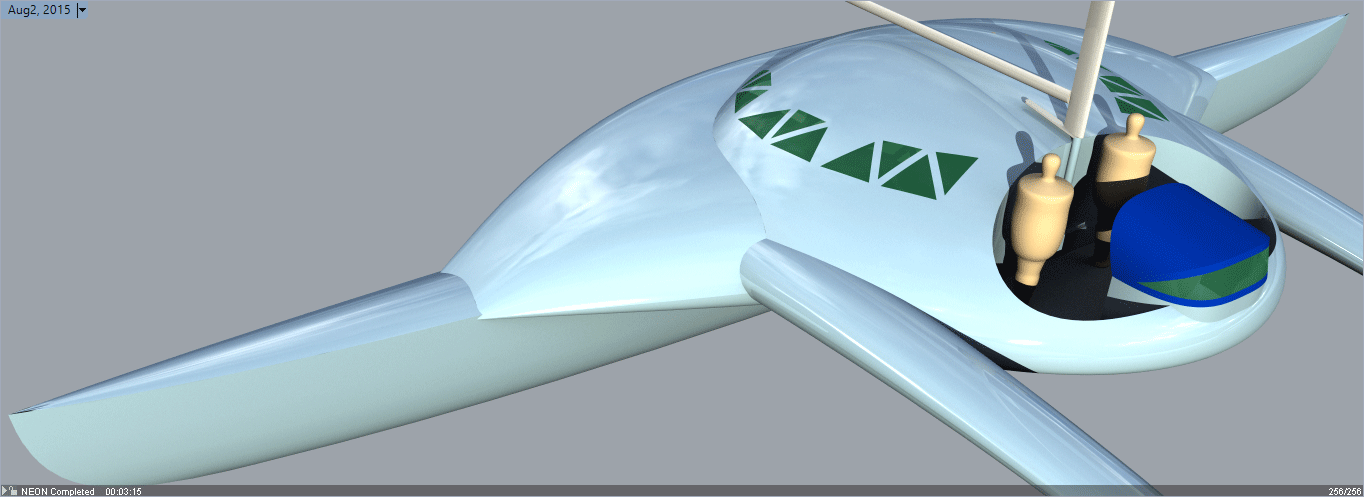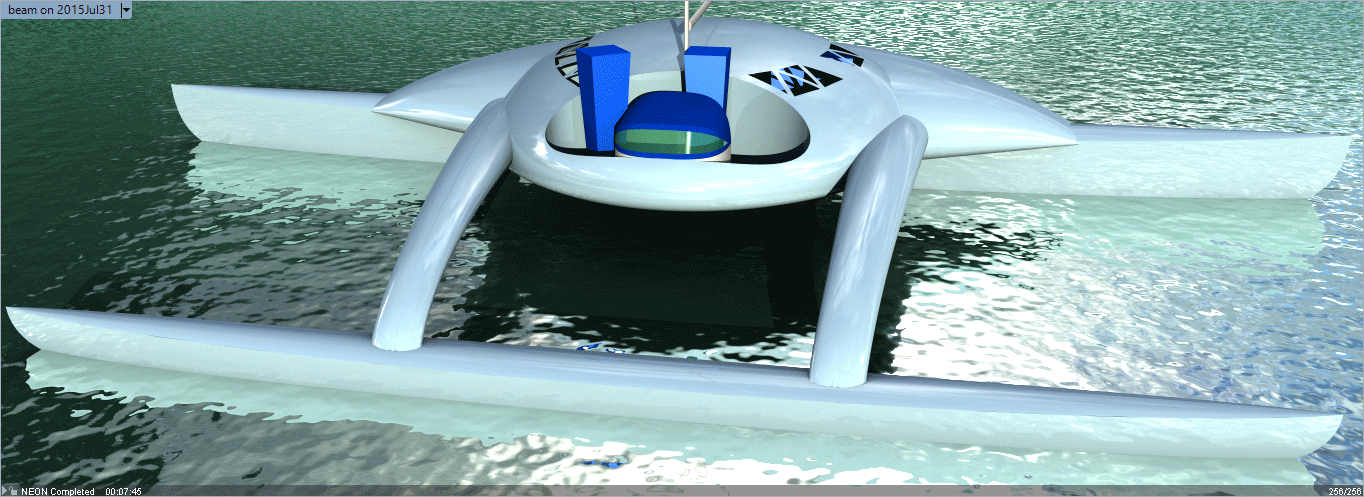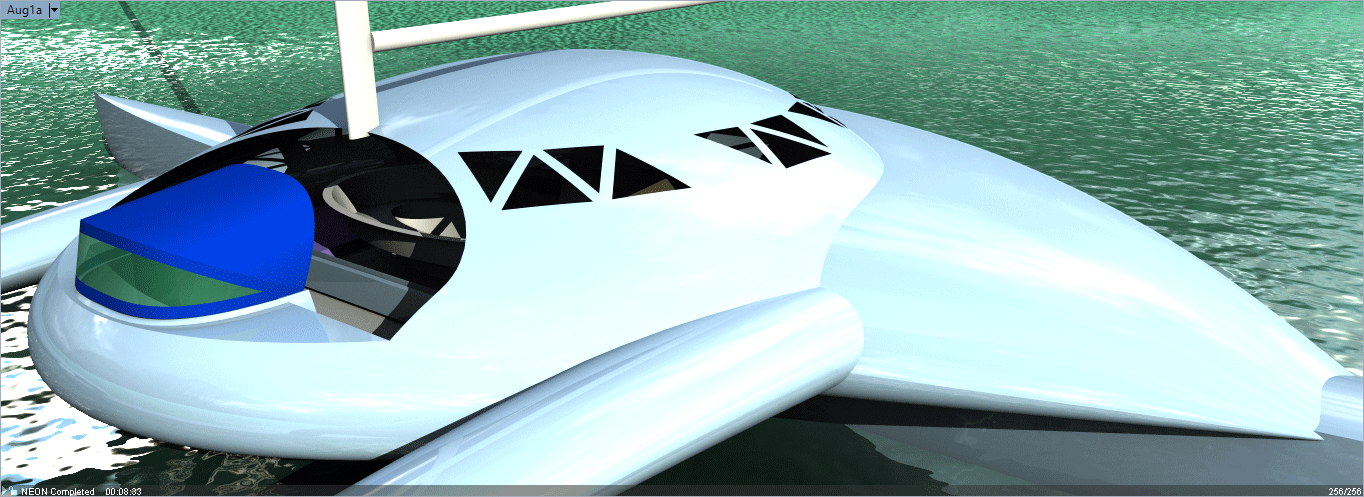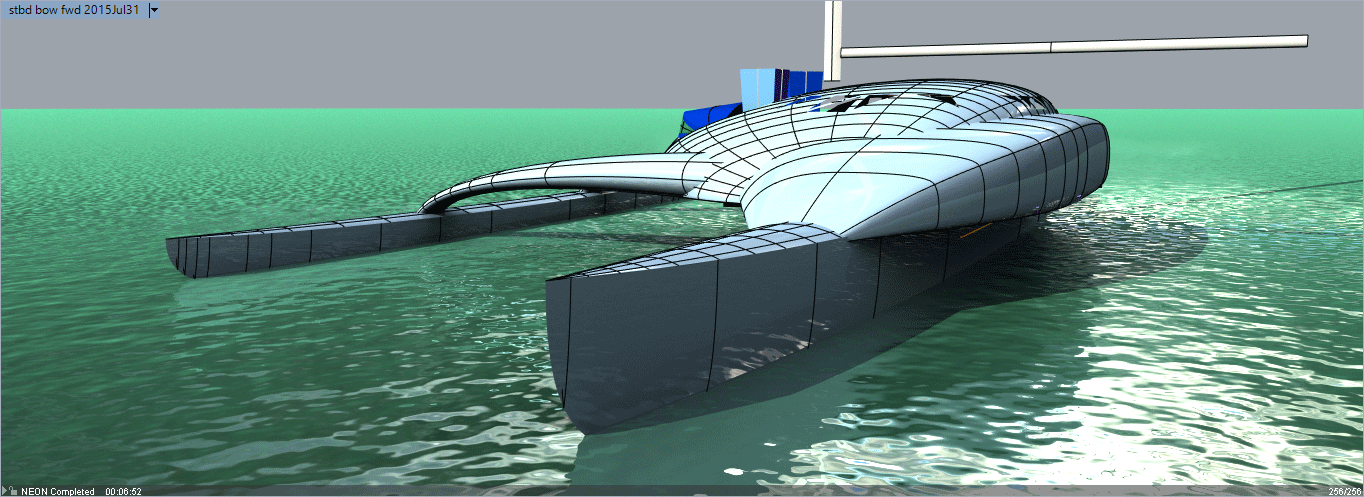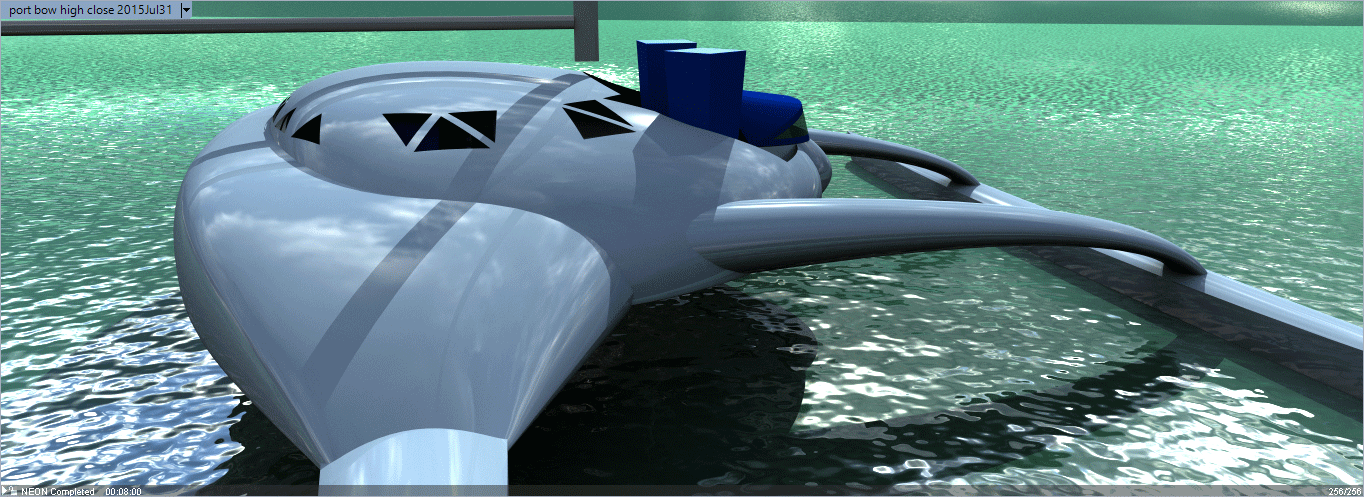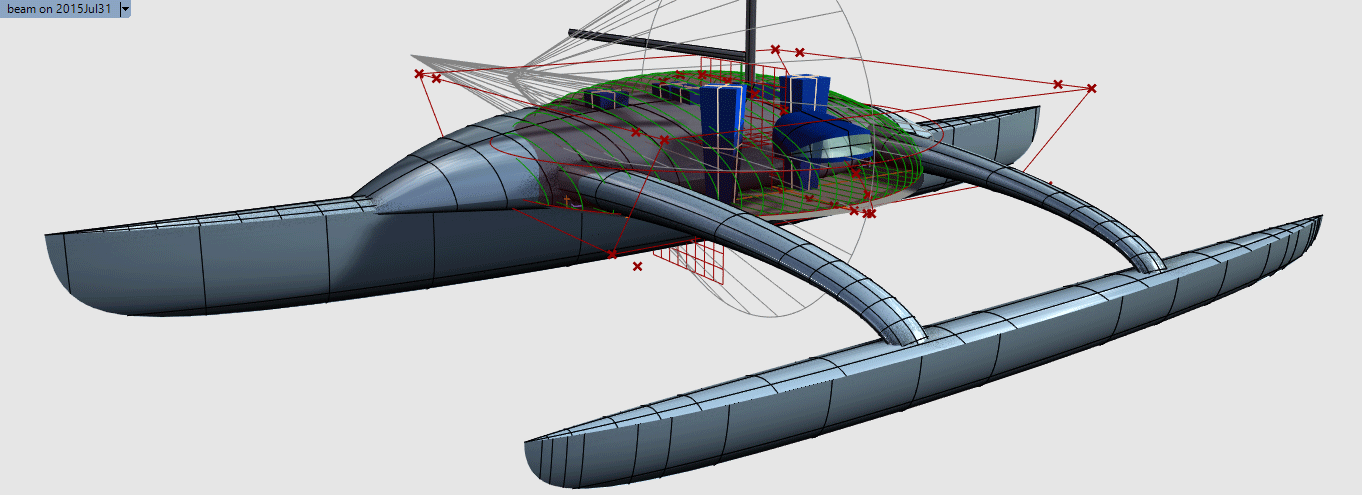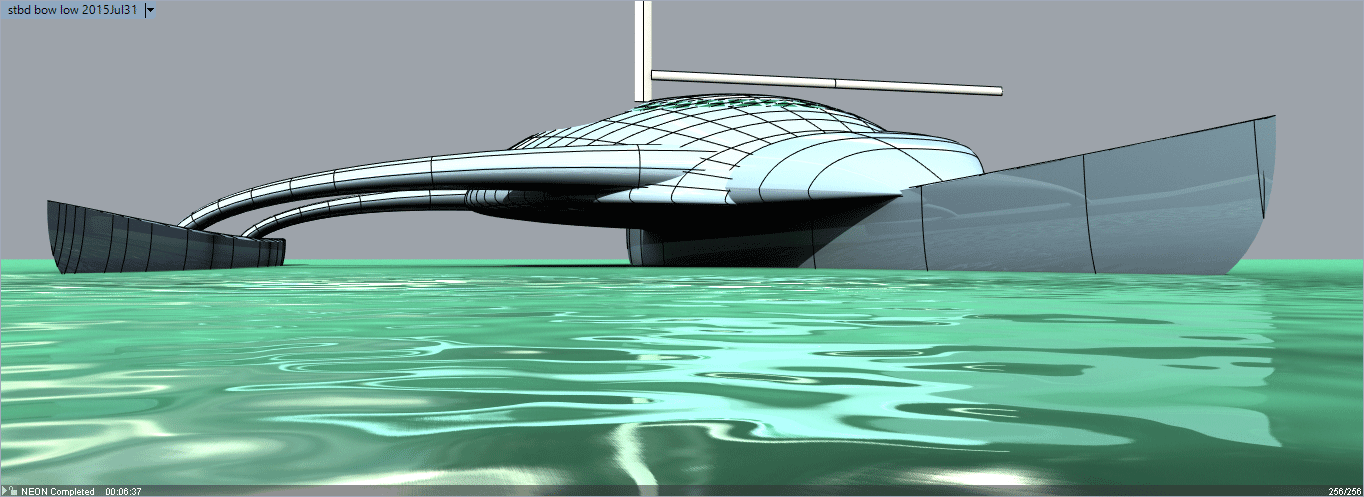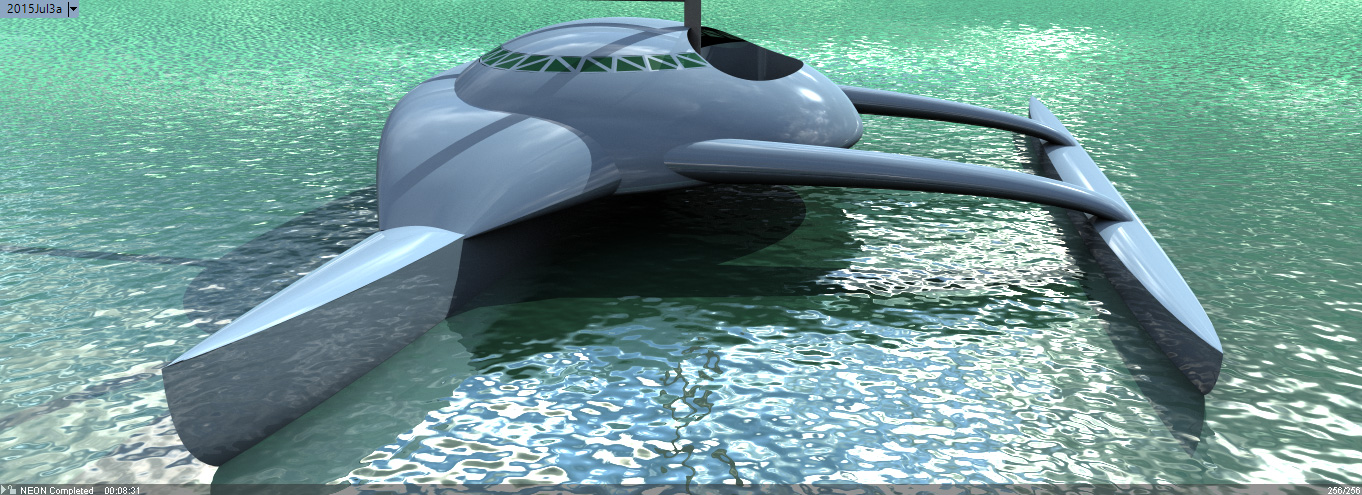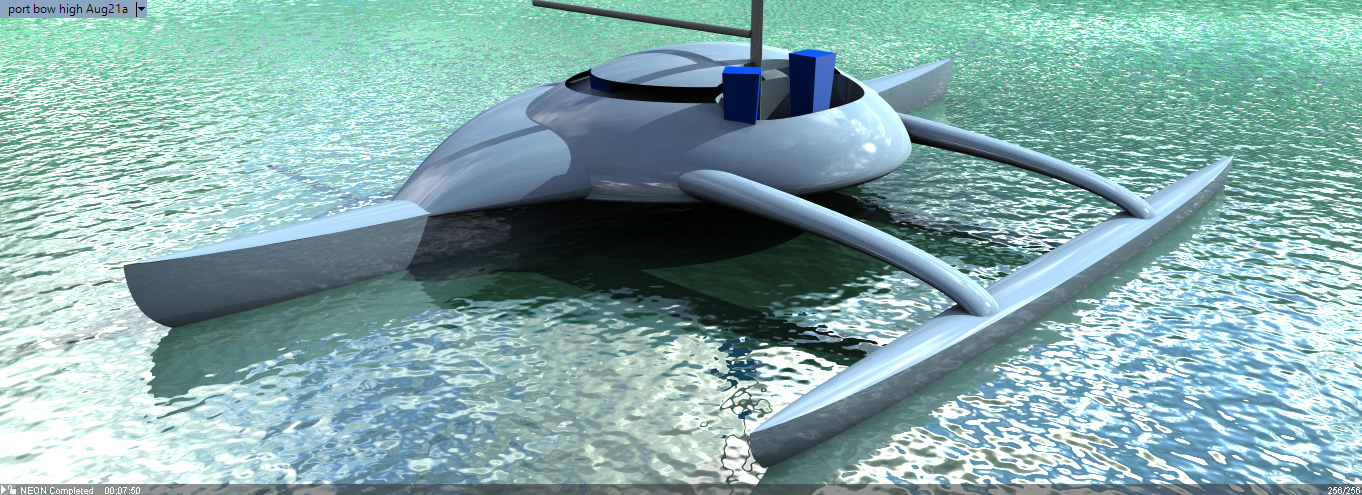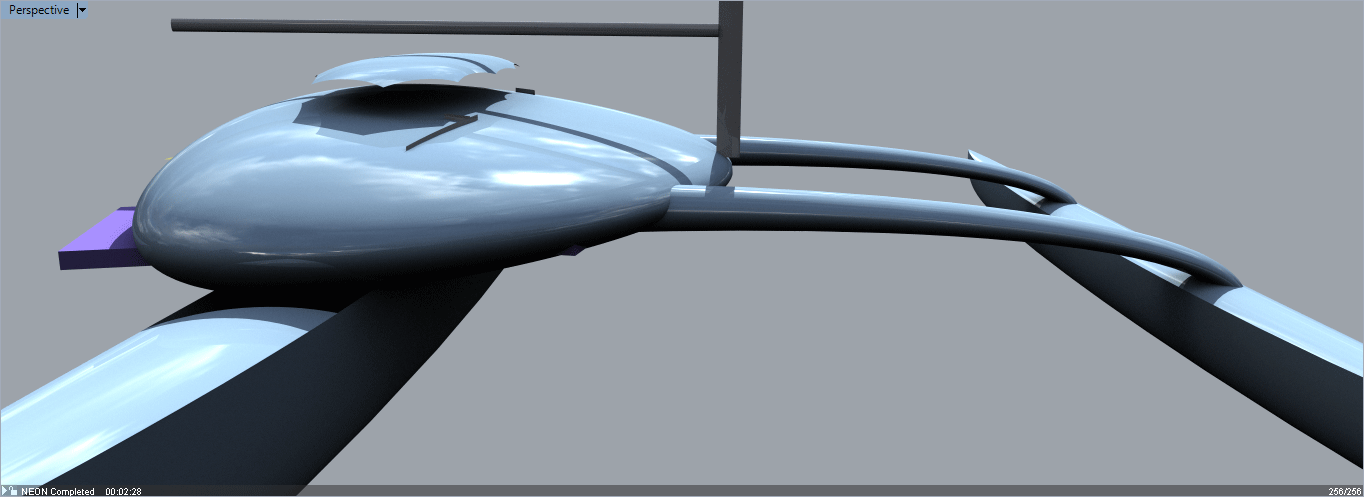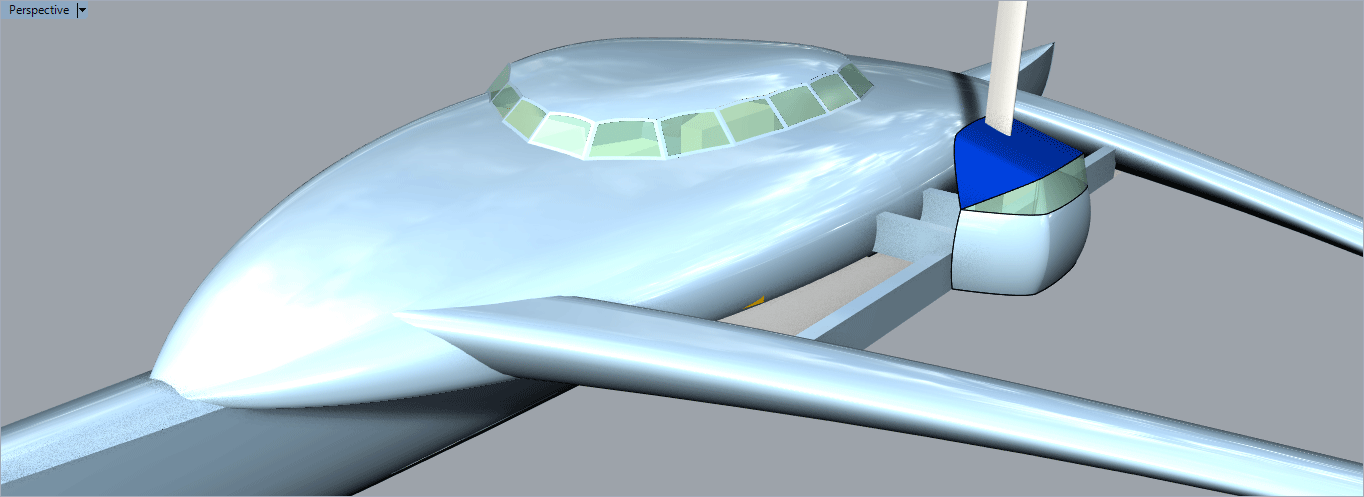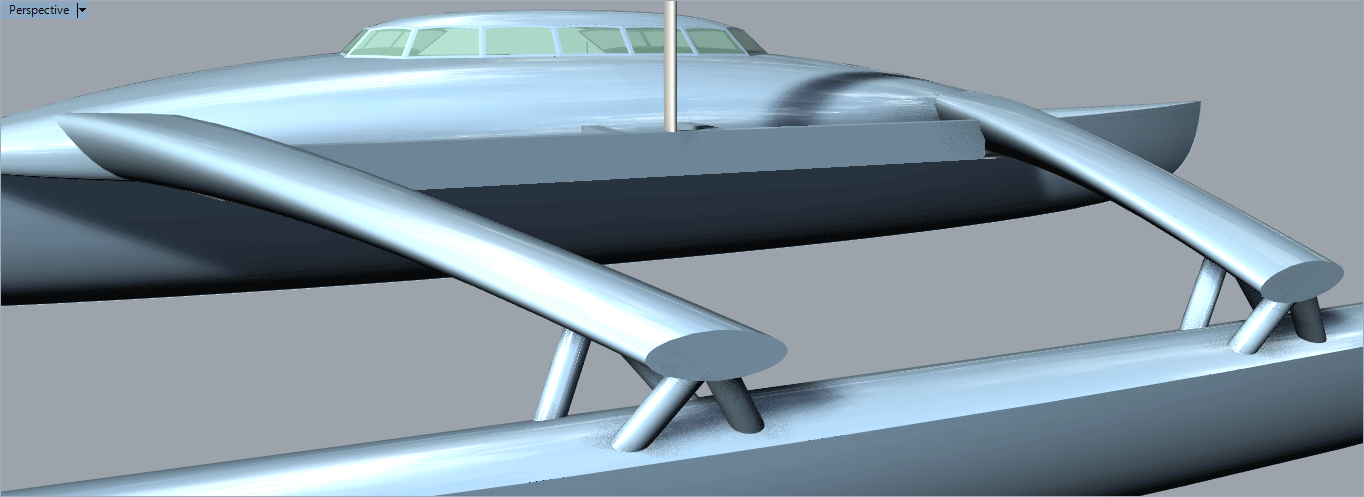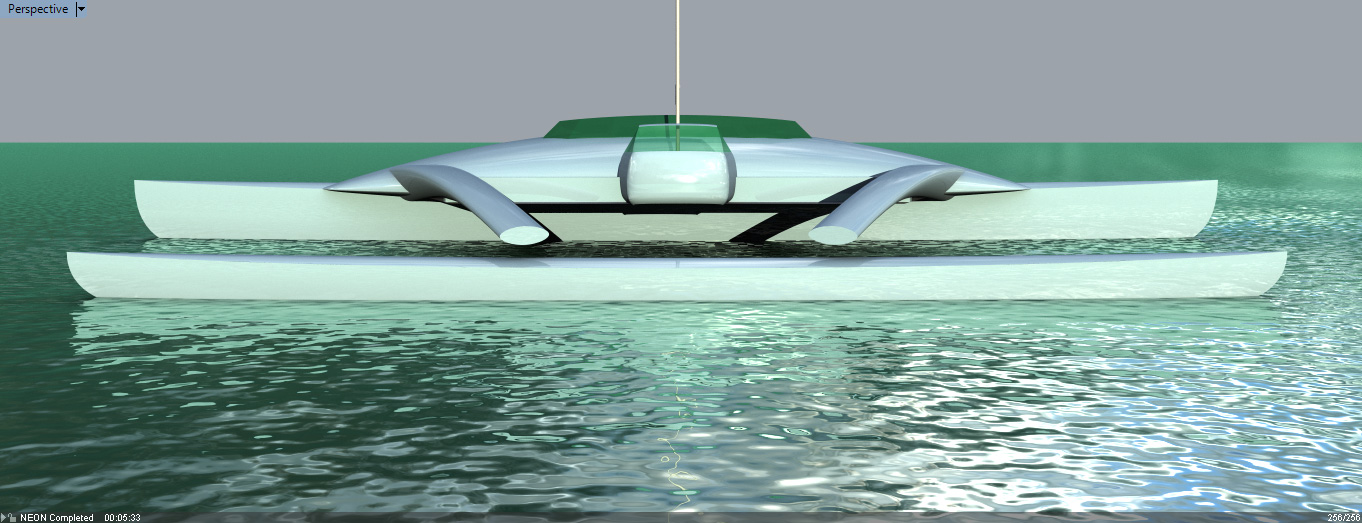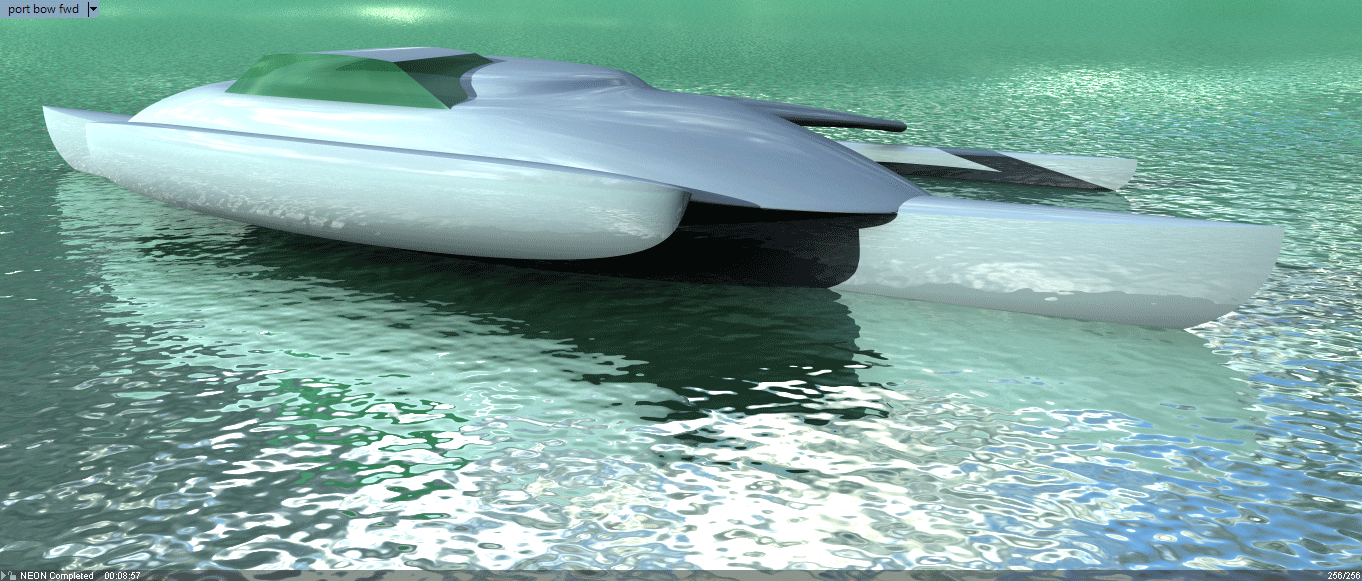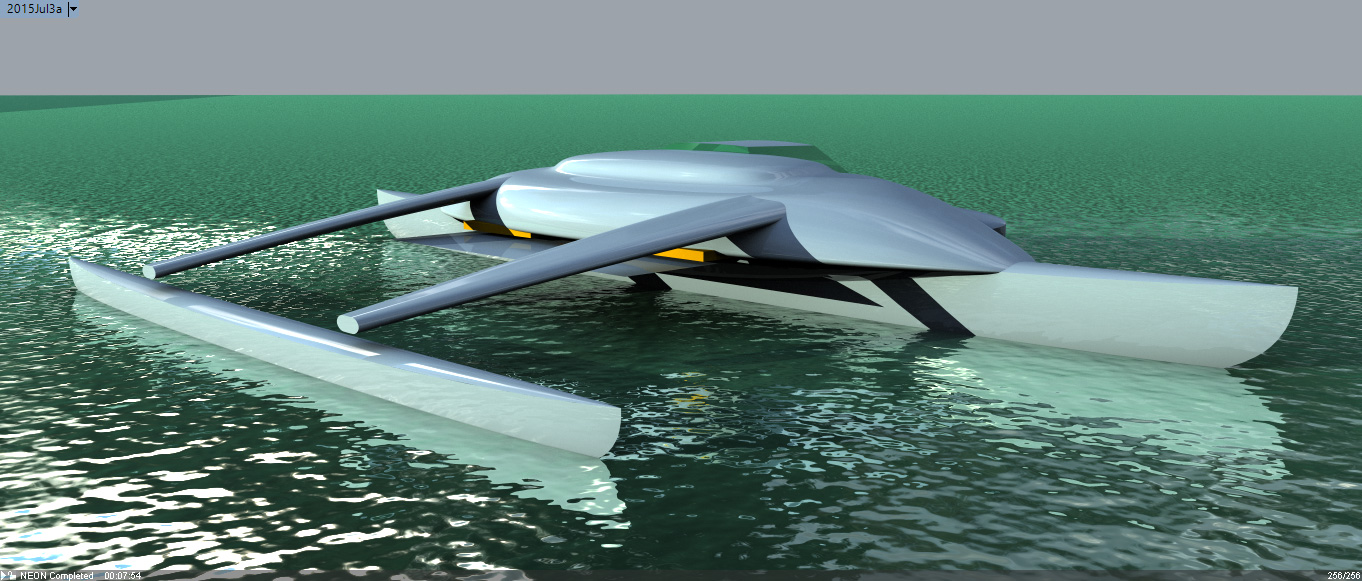Proa sketches in Rhino
Grasshopper Salon/Coach, July, 2015
Yet another iteration of the design spiral on this 70' Pacific proa. Still, nothing is resolved or "final". Instead of converging toward resolution of issues that were identified two decades ago, this cycle has been about extensive use of Grasshopper to parametrically define every curve and surface.
Turntable Animations
Hull and deck surfaces in Grasshopper were tackled in the Spring of 2014, including asymmetric hull shapes. This time, Grasshopper code bits were written for:
- Pod/salon/coach roof - Many variations and combinations of "deadrise curves", eggoid shapes and "relaxed" section curves (imagine a water balloon sitting on a table, flattened by gravity). If I had $700 to spare to buy the T-Splines® Plug-in for Rhino®, I might not have bothered going down this route at all, since I got some great results rather easily with the trial version in 2014.

- Crossbeams - Position, angle and arc shape of beam(s), trimmed to length unless buried in the ama.
- Ama connections - A fully configurable tetrahedron that matches crossbeam to ama.

- Mast tiller and position - Code that adds a configurable, angled tiller at the mast base, positions mast, tiller and boom, and adds a support post under the mast.
- Dodger - Code to create a folding dodger with fabric cut outs for windows. (in progress)
- "eye heights" - Code that defines the relationships between various "planes" needed throughout the boat, including the top and bottom of windows based on standing and sitting positions, floor, ceiling, salon and berth heights.
- Pilot house roof - Many variations of code to define and cut a large hole in the pod/coach "shell" at window height and either extract a roof shape from the shell or create a new one.
- Windows - Many variations of planar shapes for a ring of windows around the salon/pilot house, from trapezoidal pyramids to "smart triangles", with frames and window glass. These were adapted later to a different approach, cutting holes in a central shell instead of filling a gap between pod and roof.
- Seating - Code that creates a seat section, configurable for height and angles, and sweeps it along a "rail" (a curve that basically defines the edge of a table), with surfaces that define proper headroom.
Some of these code files are quite complex, developed and refined over long periods of time, while others are simple, specific to a particular problem and were written very quickly. They provide the ability to precisely fine-tune shapes and change them easily.
Unresolved Issues
Several obstacles have kept me churning through alternatives instead of refining a complete design:
- Crossbeam position and size - Simple Wharram-style beams attached at both main hull gunnels are an obstruction to useful space unless they are either very high (explored earlier) or far "forward", requiring a longer support beam for the mast and cockpit area between them.
- Companionway access from the cockpit down into the main hull. As the proa gets larger, it makes sense to allocate more of the bridge deck area for internal use (accommodations). This increases the distance that must be crossed before stepping down into the main hull, since ~70' isn't big enough for enclosed full standing headroom (as far as I'm concerned). Possible solutions include two entrances instead of one (intrusive on limited interior space) and/or moving the mast to windward of the cockpit, out of the way of a single, central entrance.
- Big salon table (for 8?) with 360 degree view. To windward or to leeward? Maybe room for only six?
Decisions
For now, some decisions have been made:
- Keep the crossbeams closer together to reduce the span for a beam to support the mast - and to reduce angular momentum in pitch.
- Keep the crossbeams low, on the assumption that composite engineering magic will leave a full size passageway through them.
- Salon table to windward, split around main companionway(s).
Specifications
- LOA (main hull): 70'
- BOA: 35'
- BWL (main hull): 4.2'
- Draft (main hull): ~24" at rest, ~30" flying the ama
- Disp (main hull): ~14,000 lbs. at rest, ~20,000 lbs. at 30" draft, flying the ama (full water ballast)
- PPI (lbs./inch Immersion, main hull): ~1,000 lbs.
- Prismatic (Cp), main hull: 0.64
Accommodations
- 6' 3" Headroom End-to-End in Main Hull
- Central galley with ~17' of counter space (shared, public area), 360 view.
- Salon table for eight, 360 view.
- Four private cabins w/ mostly ~4' headroom, queen size berths, low "desk" and luggage areas.
- "Dressing Room" landings, shared by windward and leeward cabins.
- Heads at both ends, below "Dressing Rooms" - double as shower space.
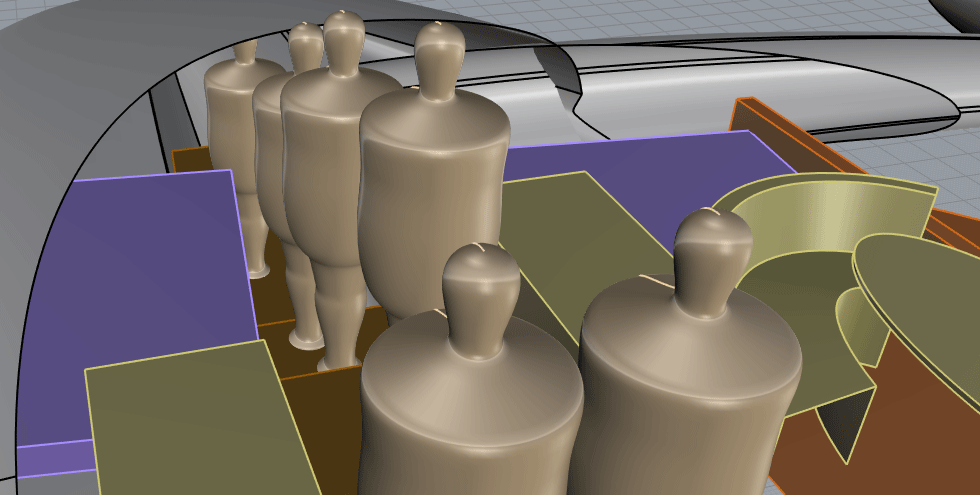
Floor Levels from Galley, through "Dressing Room"/Cabin Access to Head (6'3" people)
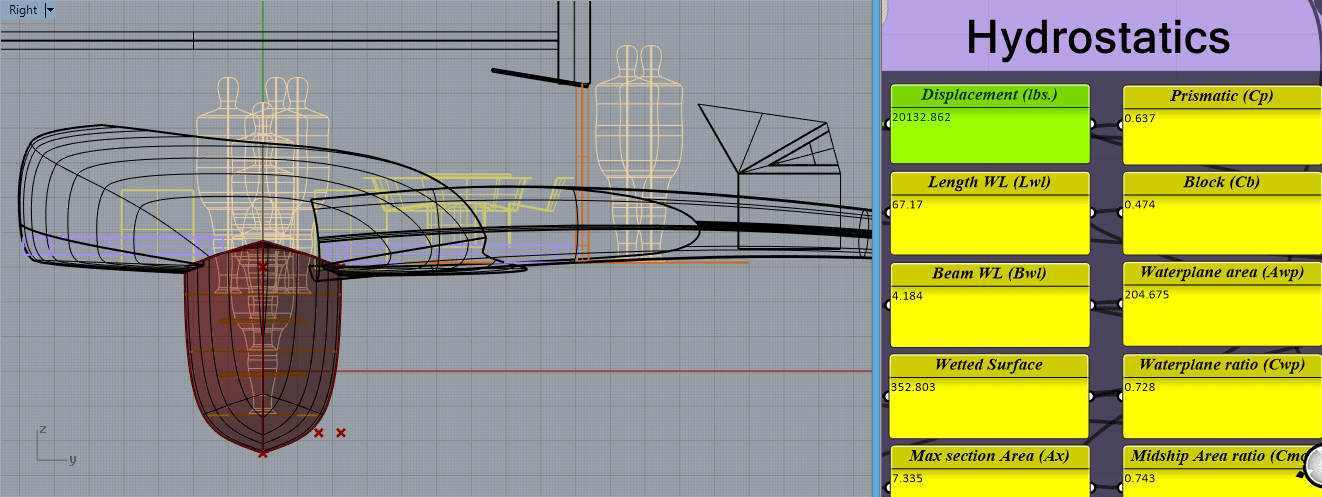
NOTE: Bridge deck clearance at rest would be 36" - ~six inches higher than shown.
Method
In this long series of proa sketches, many features stay exactly or nearly the same (hulls, crossbeams, interior accommodation, windward pilot station, position of scaled "people", etc.) while experimental changes are made to various other parts (pod/coach shape, mast position, companionway, decks, cockpit, etc.).
Quick hacks to reduce pod volume forward - length dropped from 41' to 30', yet left all accommodations untouched except for reduced storage in the heads at each end:
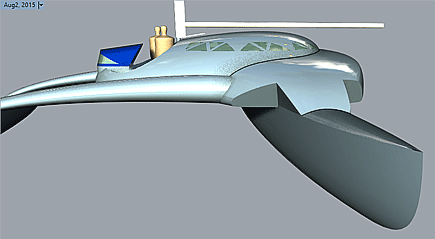
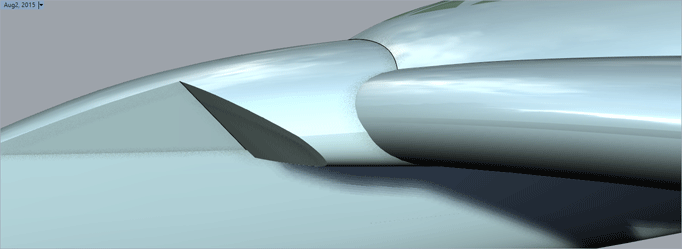


Or an alternative to chopping them off:

Winter Solstice, December, 2015
Windward Pilothouse, Leeward Salon, Single Entrance... August, 2014
Coach Dimensions... August, 2014
Grasshopper hulls, Apr 16, 2014
interior - below beam... Apr 5, 2014
wide coach roof... Mar 31, 2014
coach/pilot roof shapes... Mar 26, 2014
safety ama musings... Mar 24, 2014
Model Notes history...
These sketches of a 70' Pacific proa were done in the process of learning Rhino CAD. Nothing is final. The basic parameters of the vessel were defined decades ago.





